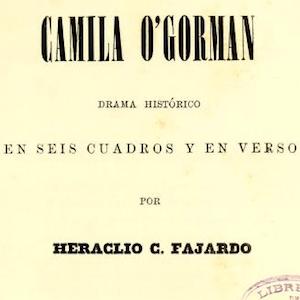Modern (1800 CE - 1950 CE)

The Ancient History of the Maori
In this excerpt, an adult Horeta Te Taniwha recounts childhood memories of a cultural encounter with Europeans for a Pakeha researcher.

A Narrative of the Life of Mrs. Mary Jemison
In 1753, 15 year old Mary Jemison was captured by Indians along the Pennsylvania frontier during the Seven Years' War between the French, English, and Indian peoples of North America.

Incidents in the Life of a Slave Girl
The book-length narrative, Incidents in the Life of a Slave Girl (1861), chronicles the experiences of Harriet Jacobs who was born a slave in Edenton, North Carolina, in 1813.

"To the Spirits of Camila O'Gorman"
The story of Camila O'Gorman (1828-1848), the daughter of a prominent merchant in the Buenos Aires community, is one of the most famous cases of a young person challenging both parental and state authority.

"How Some Children Played at Slaughtering"
The pioneering collection of fairy tales published by Jacob and Wilhelm Grimm in the first half of the 19th century reflects both the romantic interest in the national past—that is, in the cultural origins and "childhood" of the German people—and the burgeoning efforts to create a literature tail

The Chinese Boy and Girl
Issac Taylor Headland (1859-1942), a resident of Beijing and a scholar at Peking (Beijing) University, joined other contemporaries interested in both popular culture and folklore in his own study of daily life in China.

Chinese Mother Goose Rhymes
Isaac Taylor Headland (1859-1942), a resident of Beijing and a scholar at Peking (Beijing) University, joined other contemporaries interested in both popular culture and folklore in collecting and transcribing Chinese children's rhymes.

Through Masai Land
Joseph Thomson traveled through Kenya Maasailand from 1883 to 1884 on a journey of exploration from the coast to Mt Kenya and Lake Victoria, under the auspices of the Royal Geographical Society. He was the second European to visit the area.

Women's Union Telegram
That women in significant numbers were active participants in the Puerto Rican labor movement of the 1930s did not escape the attention of the government. Women’s unions demanded their rights through political channels as well as protest and striking.

Indian Tales of the Great Ones
Born in 1870 into a Parsee family in India, Cornelia Sorabji (1870–1954) became a writer and a lawyer. By the end of the Victorian period, many elite Indian men had traveled to Britain to study.